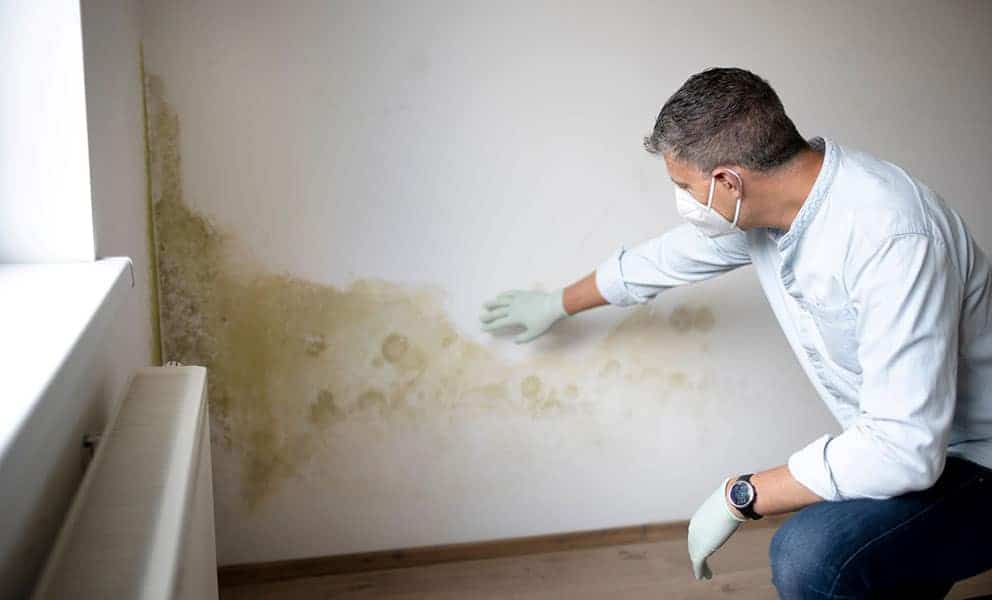
Call our team
01484 442420Find An Applicator
Menu
close

In this post, we’ll discuss everything you need to know about mould in rented properties – from the dangers and underlying causes to short-term steps and long-term treatment.
“There is little doubt that the tragic death of Awaab Ishak will and should be a defining moment for the housing sector,” said coroner Joanne Kearsley, after confirming that the 2-year-old had “died as a result of a severe respiratory condition, caused due to prolonged exposure to mould in his home environment.”
Awaab had been rushed to hospital on 19th December 2020, struggling to breathe. He was discharged but returned the next day and suffered a cardiac arrest due to respiratory failure.
In the post-mortem examination, Dr Phillip Lumb found that the boy’s airways, including his throat and windpipe, were severely swollen and congested. This was thought to be an allergic reaction to fungus, which was found in his lungs and blood.
Above all else, this landmark case shows the severity of mould in rented property. It’s not simply an eyesore. It’s a potentially fatal problem when left ignored.
The fungus referred to above is black spot mould. It develops in damp conditions, where moisture is left to fester on walls, ceilings or other surfaces without ventilation. As such, it’s often found behind furniture and in the corners of rooms, where air movement is at a minimum.
Digging a little deeper, the development of damp and mould requires two main factors – humidity and cold.
Firstly, humidity refers to the level of moisture in the air. It rises due to a range of everyday activities:
All of these activities release water vapour into the air, which increases the humidity level inside your home. That can be reduced by ventilation, extractor fans or dehumidifiers. But all too often, it becomes trapped inside a property.
Once humidity is high, all that’s needed is a cold surface to attract moisture. When walls, windows and other surfaces get cold, water vapour settles on them as condensation (condensing from a gas to a liquid).
You will see condensation on windows as it gives them a misty appearance. The water typically runs down your windows, resulting in damp at the bottom or on the windowsill. On the other hand, walls can become visibly damp with dark patches or even beads of condensation sitting on them.
Over time, those cold, damp surfaces allow mould to grow, which can – as we’ve seen – lead to serious health issues. According to the NHS, it can increase the risk of respiratory infections, allergies and asthma, as well as affecting your immune system. Old people, children and babies are more sensitive than others, as well as those with existing skin, respiratory and immune problems.
Before we get into the permanent treatment of damp and mould for rented properties, it’s important to note that a few simple steps can be taken to reduce the chances of it developing.
The first is to improve ventilation in order to keep humidity low. While you can’t avoid things like showering and washing up, you can use extractor fans and open nearby windows whenever possible to let moisture escape as it’s generated.
Another is to keep your home warm. This prevents surfaces from becoming excessively cold and attracting moisture from the air. Finally, avoid keeping furniture close to walls. This stops air from flowing, which makes it easier for mould to develop.
All that said, we understand the challenges of doing so:
In the current economic climate, it’s not realistic to expect tenants to heat their home around the clock and maintain perfect ventilation. Even if they do, you can’t always stop damp developing. Some properties are naturally susceptible to damp, such as flats and apartments, which typically have a smaller living space and fewer ventilation points.
That was the case for the property mentioned earlier, which “was not equipped for normal day-to-day living activities, which led to excess damp and condensation,” according to the coroner. While tenants have some responsibility, properties that aren’t equipped for everyday activities should be improved by landlords and housing associations.
Extractor fans, adequate heating in all rooms and working windows are all must-haves. But in many cases, further measures are needed to prevent damp and mould. That’s where a damp-proof treatment can help.
SprayCork provides exactly that, creating a moisture-resistant coating on walls and ceilings. When used as an internal wall coating, it’s applied in two 3mm layers with a 2mm overskim of plaster. Despite being so thin, it stops moisture gathering on the walls while also improving thermal insulation, which makes it easier to keep rented properties warm.
As shown by the tragic death of Awaab Ishak, mould isn’t something you can ignore as a tenant or landlord. If you want to reduce the risk of mould in a rented property, CorkSol can help.
As well as our damp-resistant coating for internal walls, we have a network of approved applicators who have been fully trained to apply our products to the highest standards.
Find your nearest approved applicator by contacting our team today. Or see SprayCork in action at a tower block in East London, which had a serious mould problem.
"*" indicates required fields